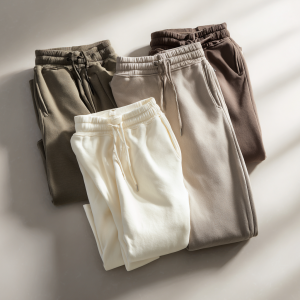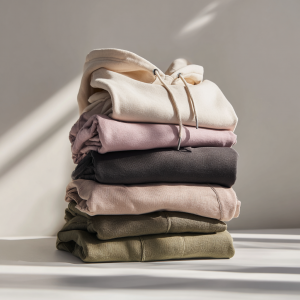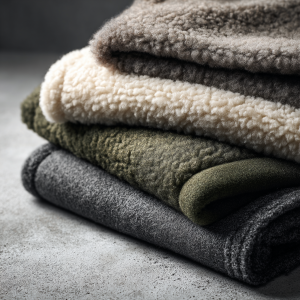
Content Menu
● The Role of Prototyping in Fashion Product Development
● The Four Types of Product Prototyping
>>> Definition
>>> Key Features
>>> Application in Fashion Product Prototyping
>>> Definition
>>> Key Features
>>> Application in Fashion Product Prototyping
>> 3. High-Fidelity Prototypes
>>> Definition
>>> Key Features
>>> Application in Fashion Product Prototyping
>>> Definition
>>> Key Features
>>> Application in Fashion Product Prototyping
● Fashion Product Prototyping: Supply Chain and Technical Considerations
>> Material Sourcing and Selection
>> Manufacturing Process Optimization
>> Quality Assurance and Compliance
>> Digital Prototyping and 3D Modeling
● Best Practices for Fashion Product Prototyping
● Case Study: Fashion Product Prototyping in Action
● FAQ
>> 1. What is Fashion Product Prototyping, and why is it important?
>> 2. How does prototyping impact the fashion supply chain?
>> 3. What technologies are used in modern Fashion Product Prototyping?
>> 4. How many prototype iterations are typical before production?
>> 5. Can prototyping help with sustainable fashion initiatives?
In the dynamic world of product development, prototyping stands as a critical bridge between concept and market-ready reality. Nowhere is this more pronounced than in Fashion Product Prototyping, where speed, creativity, and precision must align with supply chain efficiency and consumer expectations. Understanding the different types of product prototyping empowers brands and manufacturers to innovate confidently, minimize risk, and accelerate time-to-market.
This comprehensive guide explores the four primary types of product prototyping, offering deep technical insights, supply chain perspectives, and actionable strategies for fashion brands and product developers. Whether you are a startup founder, a supply chain manager, or a seasoned designer, mastering these prototyping methods is essential for success in today’s competitive landscape.

Fashion Product Prototyping is more than just creating a sample garment; it is a strategic process that tests design feasibility, fit, aesthetics, and manufacturability before full-scale production. In an industry where trends shift rapidly and consumer demands are high, prototyping ensures that only the best ideas reach the market, reducing costly errors and production delays.
Key benefits of Fashion Product Prototyping include:
– Risk Mitigation: Early detection of design and fit issues, saving time and resources.
– Stakeholder Alignment: Provides tangible models for cross-functional teams to evaluate and refine.
– Supply Chain Optimization: Enables accurate cost estimation, material planning, and production scheduling.
– Accelerated Innovation: Allows for rapid iteration, keeping brands ahead of market trends.
Prototyping also plays a pivotal role in sustainability, a growing priority in fashion. By refining designs before mass production, brands reduce fabric waste, avoid overproduction, and optimize resource use, aligning with eco-conscious consumer values and regulatory requirements.
Every product development journey is unique, but most prototypes fall into four main categories. Each serves a distinct purpose, from validating technical feasibility to simulating real-world usage. Let’s explore each type in detail, with a special focus on their application in Fashion Product Prototyping.
A Feasibility Prototype is an early-stage model created to test whether a new concept, material, or technology can work as intended. In fashion, this might involve experimenting with innovative fabrics, sustainable materials, or new construction techniques before investing in full-scale design.
– Focuses on technical or material viability.
– Typically rough and unpolished.
– Used internally by R&D or design teams.
Fashion brands use feasibility prototypes to:
– Test new fabric blends for durability and comfort.
– Experiment with eco-friendly dyes or finishes.
– Validate the performance of smart textiles or wearable technology components.
For example, a brand exploring biodegradable fabrics will create feasibility prototypes to assess tensile strength, stretchability, and color retention after washing. This stage helps avoid costly mistakes by ensuring that the material meets functional requirements before moving forward.
By identifying potential bottlenecks or sourcing challenges early, feasibility prototypes help supply chain teams plan for scalability and compliance, reducing downstream risks. Early collaboration with suppliers during this phase can also uncover alternative materials or processes that improve cost-effectiveness and sustainability.
Low-Fidelity Prototypes are simplified, often hand-crafted models that represent the basic structure and functionality of a product. In fashion, these are commonly known as “muslins” or “toiles”—garments made from inexpensive fabric to test fit and silhouette.
– Inexpensive and quick to produce.
– Focus on core design elements (fit, drape, construction).
– Used for early feedback and rapid iteration.
– Pattern makers create muslins to check garment fit on mannequins or live models.
– Designers use paper or fabric draping to visualize new silhouettes.
– Teams gather feedback on proportions, seam placements, and style lines.
This stage is crucial for ensuring the garment’s shape and comfort before committing to costly materials. For example, a designer working on a new jacket silhouette will create multiple low-fidelity prototypes to refine sleeve length, shoulder fit, and collar shape, incorporating feedback from fit models and technical designers.
Low-fidelity prototypes allow for fast iteration, enabling brands to respond quickly to trend shifts and market feedback. They also facilitate early collaboration between design, sourcing, and production teams, minimizing costly late-stage changes. Additionally, this phase helps forecast material requirements more accurately, reducing waste and improving inventory management.
A High-Fidelity Prototype is a near-final version of the product, closely resembling the intended design in terms of materials, construction, and finishing. In fashion, this is the stage where the prototype is made using the actual fabric, trims, and embellishments selected for production.
– Realistic appearance and functionality.
– Used for final fit testing, stakeholder approval, and marketing.
– May include branding, labels, and packaging elements.
– Final samples are produced for runway shows, photoshoots, or buyer presentations.
– Brands test washability, colorfastness, and wearability.
– Stakeholders review the prototype for quality assurance and compliance before mass production.
High-fidelity prototypes are essential for ensuring that the final product meets both aesthetic and functional standards. For example, a luxury fashion house will produce a high-fidelity prototype with premium fabrics and hand-finished details to verify craftsmanship and brand standards before committing to production.
High-fidelity prototypes enable accurate cost calculations, production planning, and quality control. They serve as the master reference for manufacturing partners, ensuring consistency across large-scale production runs. This stage also helps identify any last-minute production challenges, such as sourcing rare trims or adjusting assembly processes, allowing supply chain teams to mitigate risks proactively.
Live-Data Prototypes are limited-release versions of a product tested in real-world conditions, often with actual users or customers. In fashion, this might involve producing a small batch of garments and distributing them to select customers or influencers for feedback.
– Functional and market-ready.
– Used to gather real usage data, customer insights, and performance metrics.
– Supports iterative refinement before full-scale launch.
– Capsule collections released to gauge consumer response.
– Beta-testing smart apparel with integrated technology.
– Collecting feedback on fit, comfort, and style preferences from target demographics.
Live-data prototypes are particularly valuable for innovative or tech-integrated fashion products. For example, a brand launching smart fitness wear with embedded sensors might distribute limited quantities to athletes to monitor real-world performance, durability, and user experience.
Live-data prototypes provide invaluable data for demand forecasting, inventory planning, and supply chain agility. They help brands validate market assumptions and optimize production volumes, reducing the risk of overstock or missed sales opportunities. Additionally, feedback from this phase can inform supply chain adjustments, such as lead times, packaging requirements, and logistics strategies.

Fashion Product Prototyping is deeply intertwined with supply chain management and technical innovation. Here’s how brands can leverage prototyping for maximum impact:
– Early prototypes help identify the best materials for performance, cost, and sustainability.
– Collaboration with suppliers ensures material availability and compliance with regulations.
– Testing materials in prototypes reduces the risk of delays caused by sourcing issues.
– Prototyping reveals potential production challenges, such as complex construction or specialized machinery needs.
– Enables pre-production trials to fine-tune assembly line processes and minimize defects.
– Helps define quality standards and inspection criteria for mass production.
– Prototypes are tested for durability, safety, and regulatory compliance.
– Feedback loops between design, production, and quality teams ensure continuous improvement.
– Enables early identification of potential recalls or compliance issues, protecting brand reputation.
– Advanced CAD tools and 3D printing accelerate the prototyping process, reducing lead times and sampling costs.
– Digital twins enable virtual fit testing and design iteration without physical samples, enhancing sustainability.
– Integration of AI-driven analytics can predict material behavior and consumer preferences, optimizing design decisions.
– Prototyping allows brands to experiment with recycled or biodegradable materials.
– Enables assessment of environmental impact before scaling production.
– Supports transparency initiatives by documenting material origins and manufacturing processes.
To maximize the benefits of Fashion Product Prototyping, brands should adopt these best practices:
– Iterate Rapidly: Embrace a culture of continuous feedback and improvement. Shorten development cycles by using agile prototyping methods.
– Cross-Functional Collaboration: Involve design, sourcing, production, marketing, and sustainability teams early in the process to align goals and expectations.
– Leverage Technology: Use digital tools for pattern making, fit simulation, and virtual sampling to reduce physical waste and accelerate decision-making.
– Document Everything: Maintain detailed records of prototype iterations, feedback, and technical specifications to ensure traceability and knowledge retention.
– Engage Stakeholders: Solicit input from buyers, consumers, and manufacturing partners at every stage to ensure the product meets market needs and production capabilities.
– Plan for Scalability: Design prototypes with manufacturing scalability in mind to avoid costly redesigns during mass production.
– Focus on Sustainability: Incorporate eco-friendly materials and processes early to meet regulatory requirements and consumer expectations.
A leading athleisure brand sought to launch a new line of sustainable activewear. The team followed a structured Fashion Product Prototyping process:
1. Feasibility Prototype: Tested recycled polyester blends for stretch, breathability, and colorfastness. Collaborated with suppliers to source certified sustainable fabrics.
2. Low-Fidelity Prototype: Created muslins to refine fit and silhouette, incorporating athlete feedback on mobility and comfort.
3. High-Fidelity Prototype: Produced final samples with branded trims and eco-friendly packaging, ensuring compliance with environmental standards.
4. Live-Data Prototype: Released a limited collection to select customers, gathering real-world feedback on performance, durability, and style preferences.
The result was a successful product launch, reduced waste, and a more agile supply chain ready to respond to future trends. The brand reported a 20% reduction in production lead time and a 15% decrease in material waste compared to previous collections.
Fashion Product Prototyping is the cornerstone of successful product development, blending creativity with technical rigor and supply chain expertise. By mastering the four types of prototyping—Feasibility, Low-Fidelity, High-Fidelity, and Live-Data—brands can innovate with confidence, delight customers, and achieve operational excellence in a fast-moving marketplace.
Prototyping not only minimizes risk and accelerates time-to-market but also supports sustainability and supply chain resilience. Embracing advanced technologies and cross-functional collaboration ensures that fashion products meet the highest standards of quality, functionality, and consumer appeal.
Ready to elevate your next collection with expert Fashion Product Prototyping? Our team of specialists combines deep technical knowledge, supply chain insights, and creative vision to bring your ideas to life—on time and on budget. Contact us today for a personalized consultation and discover how we can accelerate your product development journey.

Fashion Product Prototyping is the process of creating preliminary versions of garments to test design, fit, and manufacturability before mass production. It reduces risk, ensures quality, and speeds up time-to-market by allowing early detection of issues and enabling rapid iteration.
Prototyping streamlines material sourcing, manufacturing, and quality assurance. It helps identify supply chain bottlenecks early, enabling brands to optimize costs, improve lead times, and ensure compliance with sustainability standards.
Technologies such as CAD software, 3D printing, digital pattern making, and virtual fit simulation are widely used. These tools accelerate prototyping, enhance accuracy, reduce physical sampling costs, and support sustainable practices.
The number varies depending on product complexity, but most fashion products undergo at least three iterations: an initial muslin, a revised sample, and a final production-ready prototype. Complex or tech-integrated designs may require additional rounds.
Absolutely. Prototyping enables brands to test eco-friendly materials and production methods, minimizing waste and ensuring that sustainable options meet performance and aesthetic standards. It also supports transparency and regulatory compliance.
Hot tags: Prototype Types Explained, Visual Prototype Example, Functional Prototype Design, Working Prototype Definition, Paper Prototype UX, Digital Product Prototypes, Prototype Development Methods, Prototype Design Models, Rapid Prototyping Techniques, Physical vs Digital Prototype